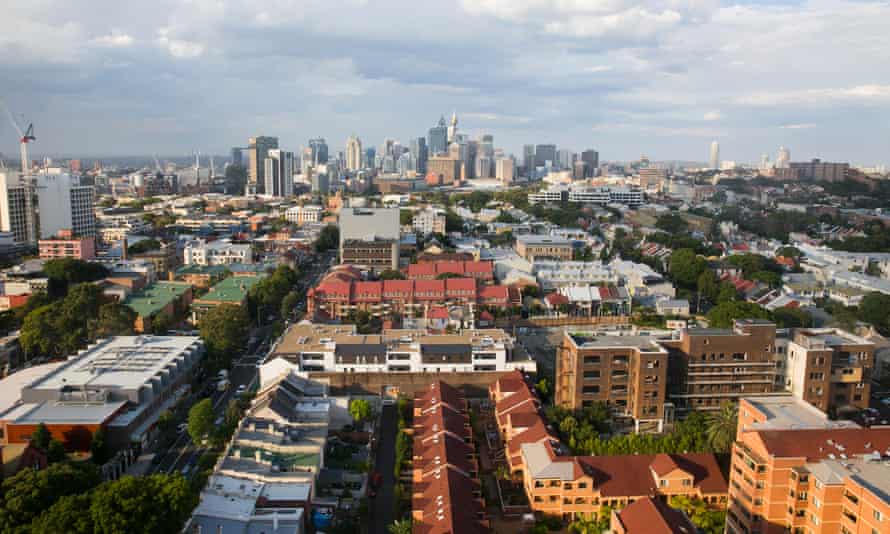Extract from The Guardian
The imbalance in public support of housing is not only socially unjust, it also hugely distorts our whole housing system.

Last modified on Mon 24 May 2021 15.00 AEST
Housing once again looks set to form a major bone of contention in the coming general election. That much was clear from the ALP’s recent budget response. Labor had already backed the Coalition’s first homeowner initiatives. But opposition leader Anthony Albanese’s budget reply pledge to ramp up social and affordable housebuilding marked a clear point of difference from the government.
This was not difficult to achieve. Despite ongoing increases in housing affordability stress over the past decade in many cities and regions, successive Liberal National governments have presided over a continuing dearth of non-market housebuilding. In his stock response to calls for post-Covid social housing stimulus, housing minister Michael Sukkar has time and again washed his hands of the issue by declaring it purely a state and territory responsibility.
So what exactly does federal Labor have in mind? At an estimated cost of $10bn, its proposed social and affordable construction program would generate 30,000 homes over five years. This would equate to somewhere around a fourfold increase on recent build rates – certainly a welcome prospect for a sector that has effectively contracted by a third since the 1990s (from 6% to 4% of all housing).
Albanese’s housing supply pledge follows the Victorian government’s groundbreaking 2020 announcement of its $5.4bn Big Housing Build initiative, as a key part of the state’s post-pandemic recovery plan. Under the BHB, Victoria will see more than 10,000 new social and affordable homes added to its housing stock over four years. An important difference of course is that this is a plan and not – as in the Albanese statement – only a proposal.
Following a decade of social housing inactivity, both plan and proposal deserve applause. But neither represents a commitment of gamechanging scale. Victoria’s scheme would see social and affordable construction boosted from 0.5% of all housebuilding in the state to about 5% – dramatic, but far short of the 16% seen across Australia 1945-70.
As for the ALP’s proposed scheme, this would expand current annual lettings of public and community housing by a worthwhile but modest 18%. In its contribution to national social housing stock, the scheme’s annual output of 6,000 homes would fall far short of the 15,000 needed to just to keep pace with rising population (and need).
While most Australians are well-housed and many have reaped huge financial windfalls from the housing market, substantial and growing numbers are badly served by our current system. About 200,000 households are registered on social housing waiting lists and census-informed evidence suggests that well over double that number are either homeless or living in unaffordable or otherwise unsuitable housing.
So do Australian governments simply need to face up to a need to spend more on housing? Many of us would say no. The public finances are, in fact, already supporting huge but ill-targeted housing expenditures. The most notorious of these are the negative gearing and capital gains tax discount concessions that advantage private landlords. The highly regressive nature of these can be gauged from the Grattan Institute estimate that 80% of CGT discounts flow to the top 10% of income earners.
Also counting in the generous tax concessions allowed to homeowners as well as direct assistance such as direct lending, we have calculated that the public purse is already effectively pumping more than $100bn into our housing system each and every year. Yet only about $8bn of this is specifically targeted to lower income earners through social housing subsidies, homelessness support and rent assistance.
This imbalance is not only socially unjust, but it also hugely distorts our whole housing system. It provides far too strong an incentive to over-invest in a market inherently restricted in its ability to quickly respond. The result is all too familiar: high and rising house prices.
Expanded social housing programs are, without doubt, an essential part of Australia’s better housing future. Reversing social rental sector decline would be beneficial in any circumstances. A defensible long-term target would be expanding provision to the OECD average – 7.1% of all housing.
But only through more fundamental reform can Australia really get to grips with wider housing unaffordability. We have to re-balance a system that overly benefits existing homeowners and landlords at the expense of tenants, especially lower income renters. We have to break away from a pathway that is increasingly restricting young adults’ opportunity for homeownership to those with access to family wealth.
Are the kinds of measures that would be needed to move in that direction just pie in the sky? Maybe, but progressive housing tax and legislative reform is not impossible. The New South Wales government recently pledged to emulate ACT’s phased replacement of stamp duty by land tax. And only a matter of weeks ago, the Victorian government significantly strengthened renters’ rights.
Further afield, and on a much larger scale, the UK saw the elimination of owner-occupier mortgage interest tax relief in the 1990s, and sharply reduced tax concessions for investor landlords in the 2010s. Both of these initiatives were enacted under Conservative governments. Perhaps more remarkably, in what has been described as “a step toward a more-equitable tax system”, the US government in 2017 significantly scaled back two of the main homeowner subsidies available to affluent Americans.
What is needed above all in Australia is unequivocal ownership of the housing affordability challenge by our national government as well as by states and territories. Only then could the country set a course towards a more balanced and equitable housing system to the benefit of all.
No comments:
Post a Comment